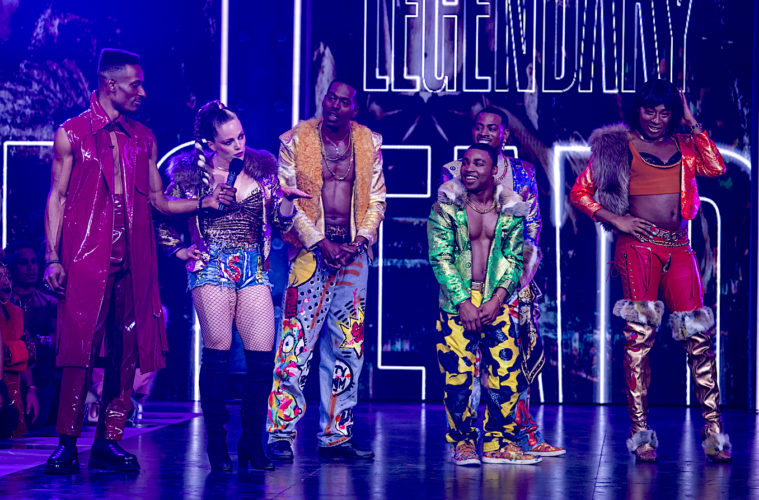Voguing and ballroom culture was nothing more than a Madonna dance ditty to many before FX’s Pose, a vibrant, gamechanging dramatic series that sought to explore the early days of the scene in New York. As first depicted in the documentary Paris is Burning, this exciting form of underground nightlife meshing movement, fashion and thematic one-upmanship was created by gay and transgender people of color as a mode of expression and acceptance, providing a celebratory contrast with what they were experiencing in the outside world. Filled with fierce competition and a soapy yet authentic narrative featuring real trans actors, Pose (now available to binge on Netflix) has been nothing short of a revelation in its celebration of early ballroom, showing viewers that —regardless of color, class, gender or sexuality — under the glittering gazes and slick moves, we are all the same.
Balls are gatherings of people who are not welcome to gather anywhere else. A celebration of a life that the rest of the world does not deem worthy of celebration. There are categories, there’s voting, and trophies. You can actually make a name for yourself by winning a trophy or two. And in our community the glory of your name is everything.
—Blanca Evangelista, Pose (Season 1)
But what about the culture now? And what about the colorful real life characters currently keeping the scene alive? With the success of RuPaul’s Drag Race (which borrows from ballroom in more ways than one) and TV competitions like So You Think You Can Dance, a reality show featuring these flamboyant figures was long overdue. And now we have it with HBO Max’s riotous competition called Legendary.
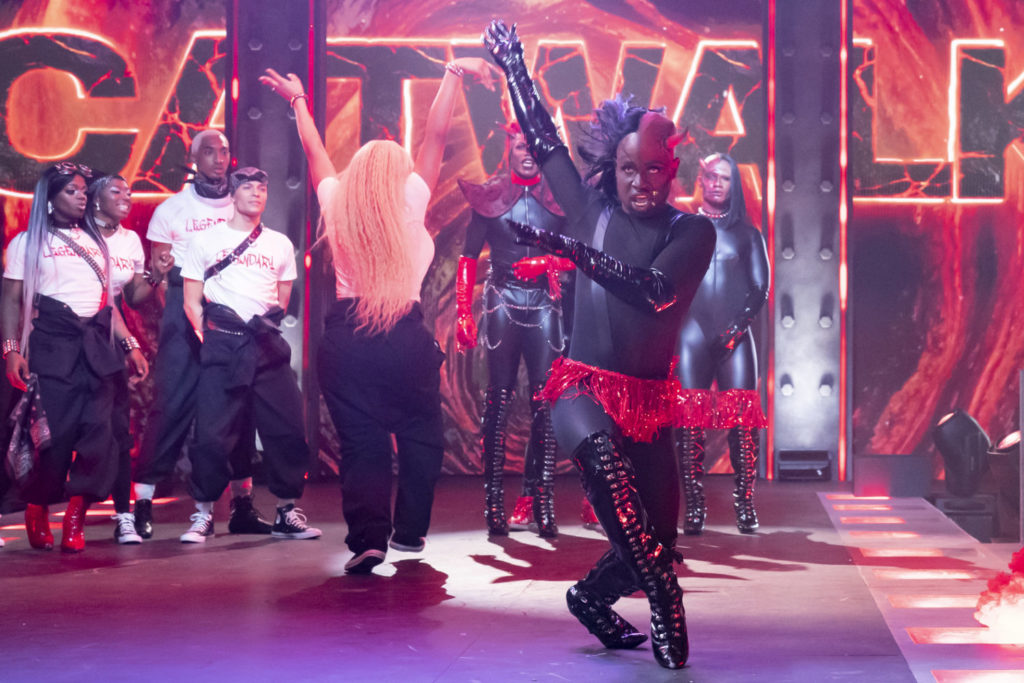
Legendary runway moves. (Barbara Nitke/HBO Max)
The new show, which aired its finale just last week (subscribers can now watch the entire series on demand and via the streaming site) has already been renewed for a second season, though it remains to be seen if the format will be the same post-pandemic. Except for the finale, which took place just as COVID-19 restrictions began, season 1 was filmed on a Connecticut sound stage. Turned into a giant nightclub environment with audiences bused in from NYC in glam garb, the show is as energetic off stage as on, with fans yelling for their favorite “houses” (troupes) as host and MC Dashaun Wesley chants over each performance with rhythmic, rap-like commentary. Then, the show’s judges — including rapper Megan thee Stallion, stylist Law Roach, actress Jameela Jamil and trans ballroom icon Leiomy Maldonado — provide helpful, sometimes fawning, sometimes brutal critique of elements and category bouts including “face,” “body,” “hands,” and “catwalk.”
Each house — usually named after a well-known fashion designer or figure — functions as a familial unit, with the house “mother” providing direction, guidance and support for her “children” concerning their performances on stage and often, their struggles in life. Each member takes the house name as their last name, by the way. It’s a sharing and caring connection and the love shines through on the show, even when there’s contention within crews or against competing ones vying for the $100, 000 prize.
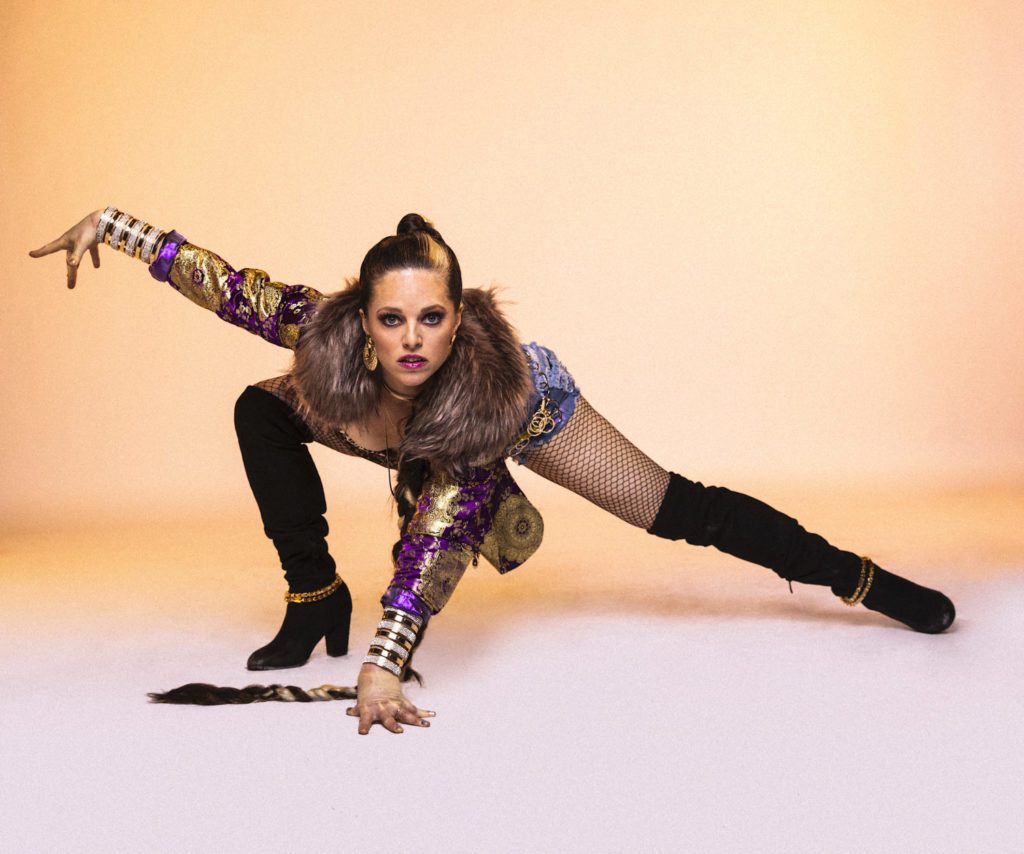
Isla “Ebony” (Zach Dilgard/HBO Max)
Isla Cheadle aka Isla “Ebony” is mother for The House of Ebony, one of the most memorable groups on Legendary. The L.A. based performer has been a proponent of ballroom since she moved here and discovered its magic several years ago. Yes, New York is the home of voguing and posing, but L.A. has a vital and thriving scene as well, says Mama Ebony. We’ve seen it ourselves too, covering the dancer/singer’s endeavors as part of the music duo Purple Crush and as a promoter, throwing her Banjee Ball events since 2013.
Purple Crush got its start in New York, but the dramatic dance and spectacle of ballroom seduced Isla and her partner Jared (the other half of the band and her husband) into its world when she saw that she could actually be accepted in it. “I didn’t realize cis gender women were as heavily involved as they are,” explains the dancer who established herself in the House of Chanel before joining Ebony. “I have a lot of trophies from state to state and in 2017 I was awarded Woman Voguer of the year in New York City.”
Soon after that win, Isla got pregnant and then became a member of Ebony, a house started by Larry Ebony in Brooklyn back in 1978 (see Isla’s IGTV video below for a full history lesson). She says that while Ebony was best known for “realness”— a category not shown on Legendary which concerns LGBTQ people being able to pass for straight or a gender other than how they were born — she was chosen due to her history and relationships in the scene.
“We’re a large house with members all across the country,” says Isla, whose official Ebony title is “godmother of L.A.” When the show got picked up by HBO, she was assembling her team to compete, which was a bit more of a challenge than it might have been for the other competing groups on the show. “House of Balmain are all from L.A., raised by Jumari Amour ‘Balmain’ locally, Ninja is a little spread out- they do the international thing but they have an established house parent from Italy; the House of Escada are all from Boston and London ‘Escada’ is their house parent; Lanvin is also very tight knit and established… Ebony was a different situation. We had a couple people that had to drop out within a week before filming, so we had to pull in some people last minute and Shorty was one of those.”
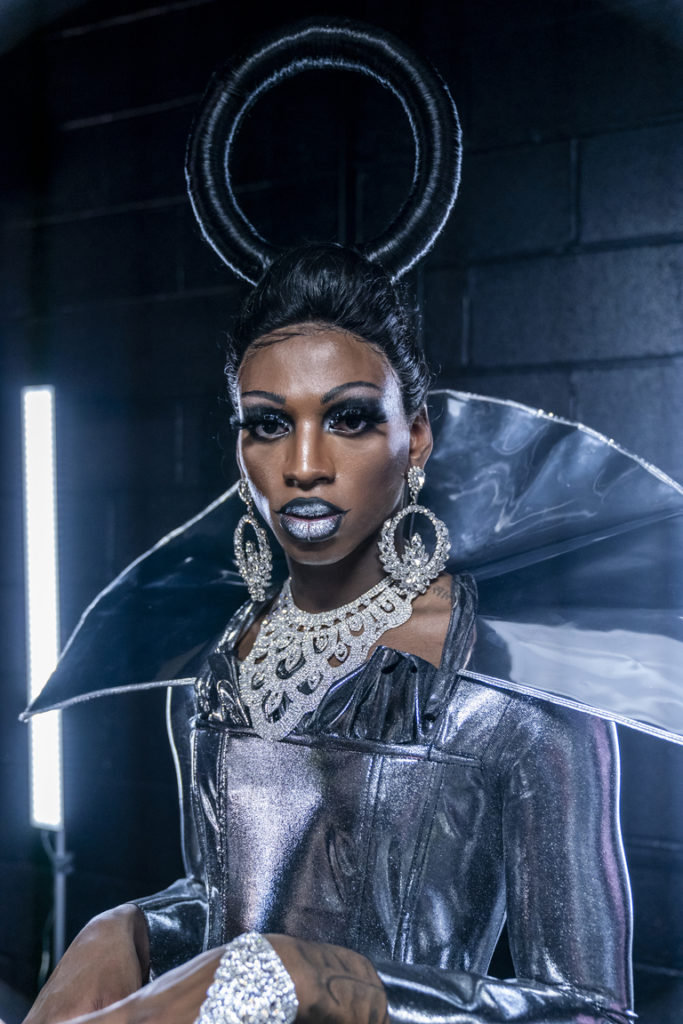
Legendary look. (Zach Dilgard/HBO Max)
We won’t spoil too much of the show for those who still haven’t seen its final outcome (not knowing who will go home each week is part of the fun, right?) but we will reveal that in episode 5 Isla and her fam — which includes a lovable dancer by the name of Shorty — make quite a memorable impression, and decisions are made by the judges that many have disagreed with online. This writer sure felt like somebody got robbed. But then again, other than Maldanado, the judging panel are essentially novices to ballroom’s workings and criteria. Just like us viewers for the most part.
Ultimately the right house does come out victorious and watching all the quick and slick hand movements, face framing, splits, dips and death drops (don’t get it twisted, these didn’t get invented on Drag Race) is a true pleasure. Legendary also has some great fashion moments and we get to see the collaboration process for creating house looks behind the scenes with the show’s designers, who do an incredible job with thematic styling to themes such as circus, outer space, ancient history, heaven and hell, etc.
Moreover, Legendary‘s familiar back story reality format, in which contestants lives and personal histories are explored before the performances, works especially well here. Sharing how many black and brown LGBTQ people are often ostracized by their families and or their communities for being their true selves, these packages also show how houses offer hope and a new kind of “chosen family” focused on bringing joy to the participants and to the public.
Voguing has come a long way from Madonna mugging like a movie star for the mainstream, that’s for sure. Some still feel like the queen of pop appropriated the scene, even though she’s been a huge LGBTQ supporter throughout her career. As a straight white woman, Jones is very aware of that contention, and she’s always striven to educate and celebrate the origins of the culture. Purple Crush (whose music is heard on Legendary) pays tribute to it and their videos have featured several of BIPOC talents seen on the show, too. Isla says she and Jared are wrapping up a new Purple Crush album right now, which she describes as “kind of emo ballroom.” Currently, she can also be seen teaching vogue classes via Silver Lake’s The Sweat Spot dance studio online.
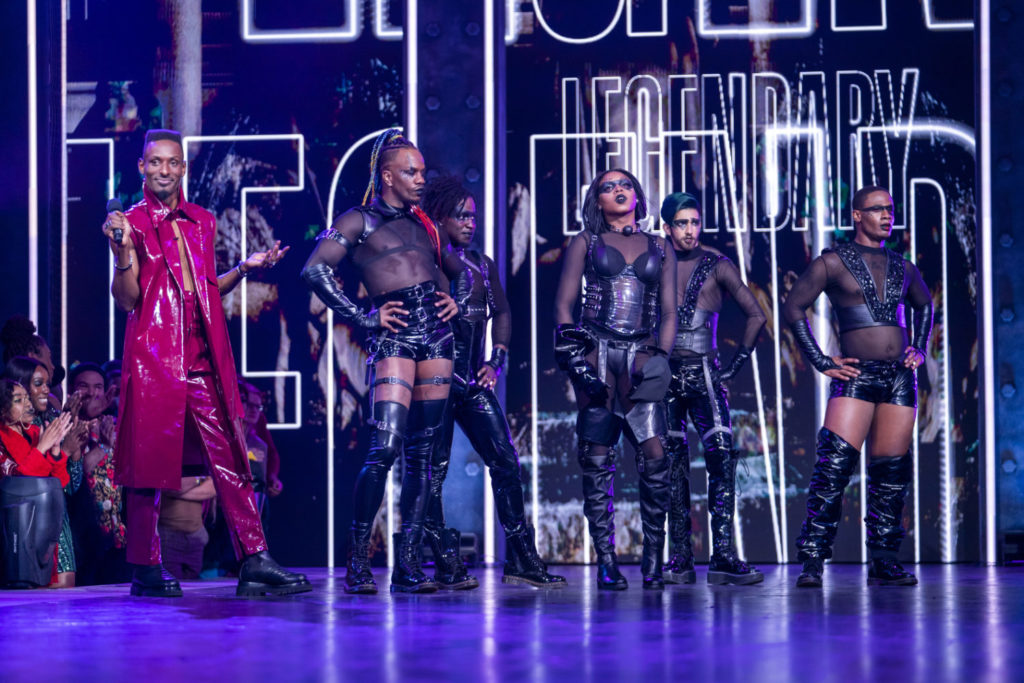
L.A.’s own House of Balmain (Zach Dilgard/HBO Max)
If Pose took things to a new level, it’s now up to shows like Legendary to make a much bigger leap forward for the queer community and for club culture (which during pandemic, really doesn’t exist otherwise), giving credit where credit is due, and bringing a true inclusiveness to entertainment and the world, something that is needed now more than ever.
“It’s really important that ballroom stays focused on those that created it and helps those that it was created to help,” says Isla, who hopes the show continues to do just that. “But it is also expanding. It’s going international. It’s about acceptance and learning how to love yourself and finding your stride and living your life. It’s a cultural movement and it’s one of the greatest American art forms.”
Advertising disclosure: We may receive compensation for some of the links in our stories. Thank you for supporting LA Weekly and our advertisers.

